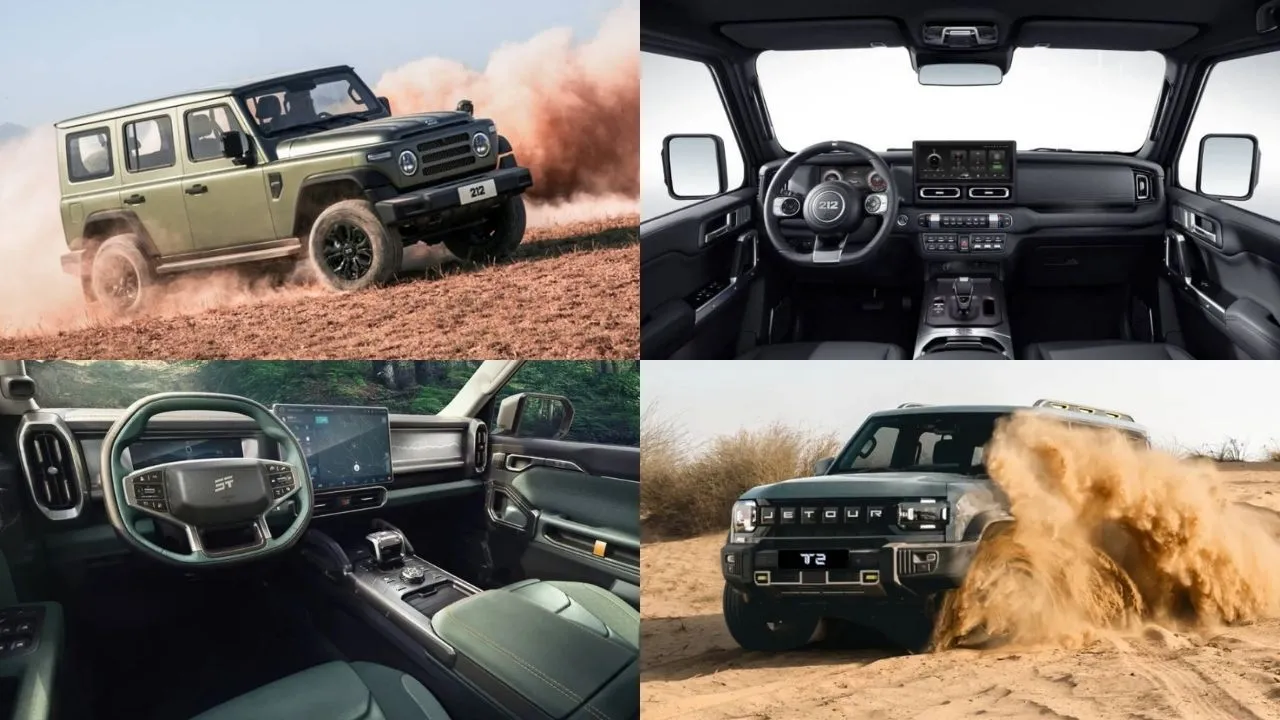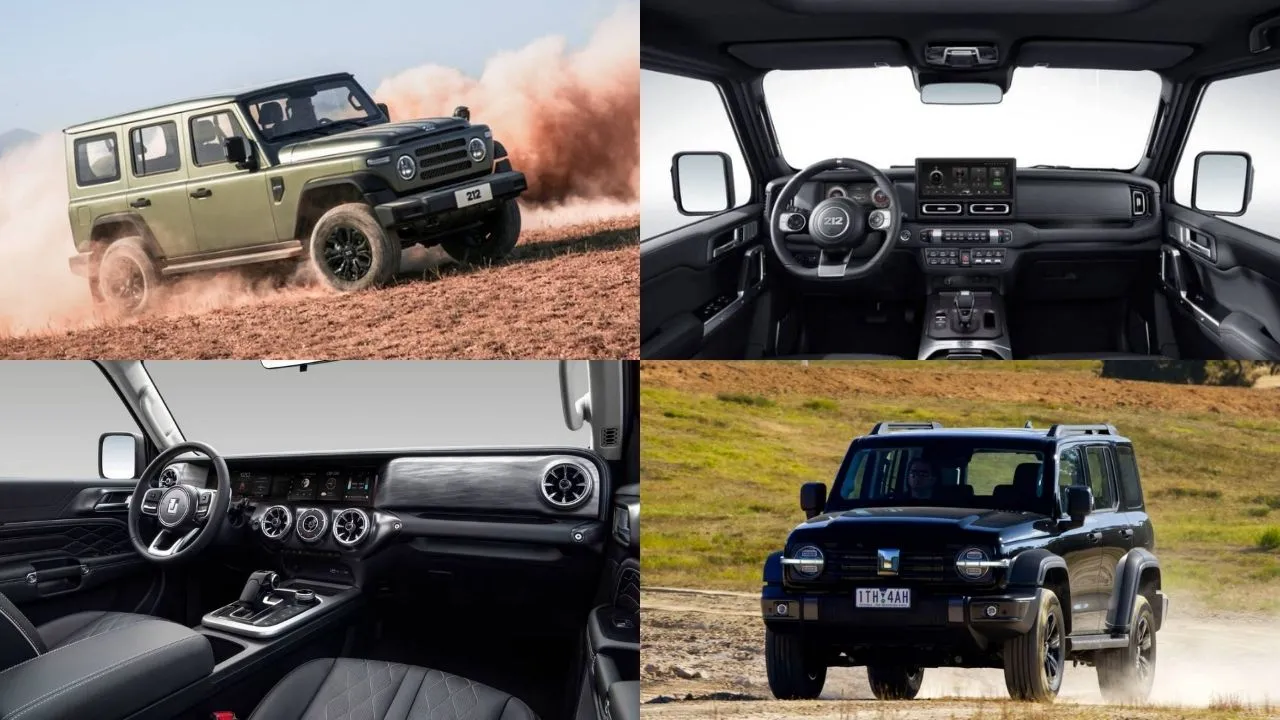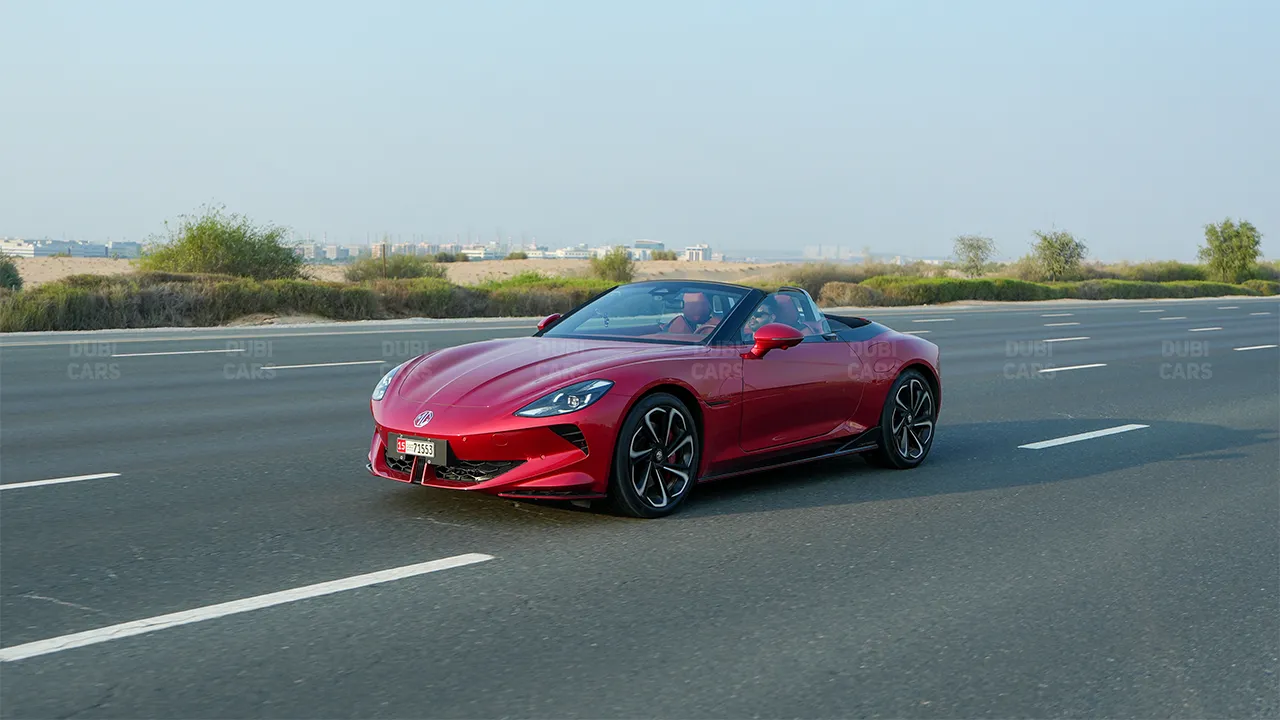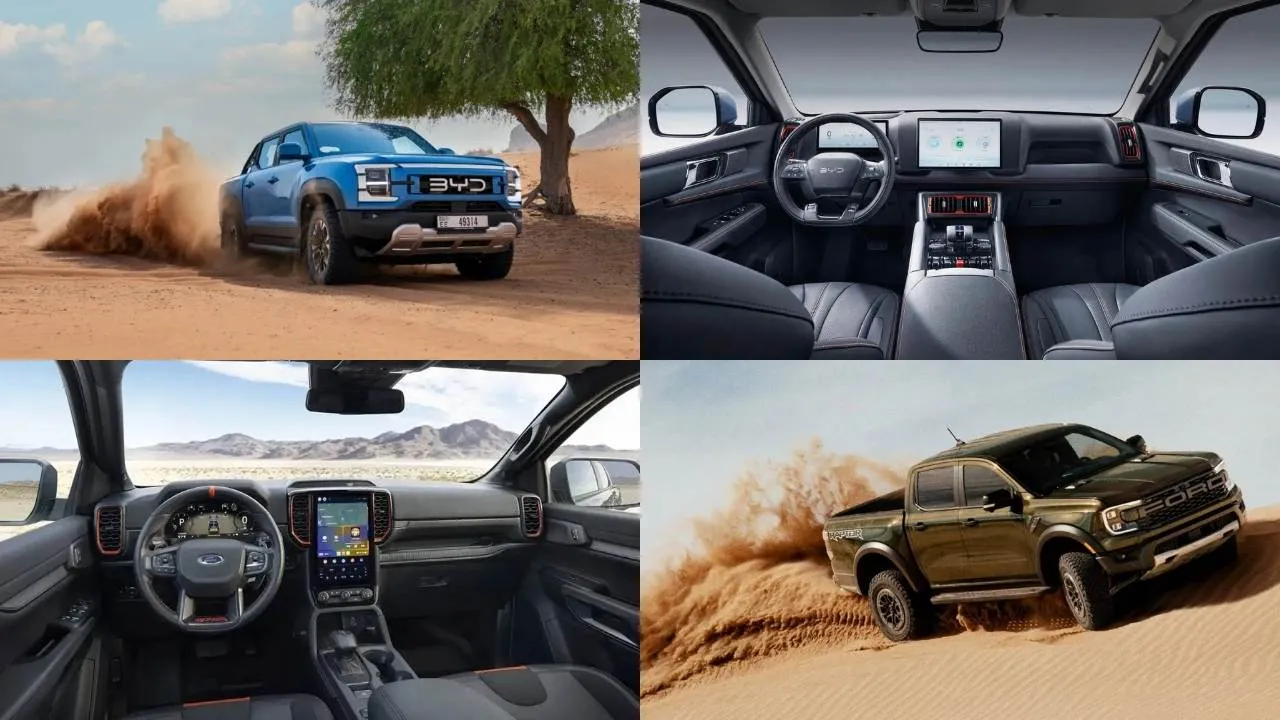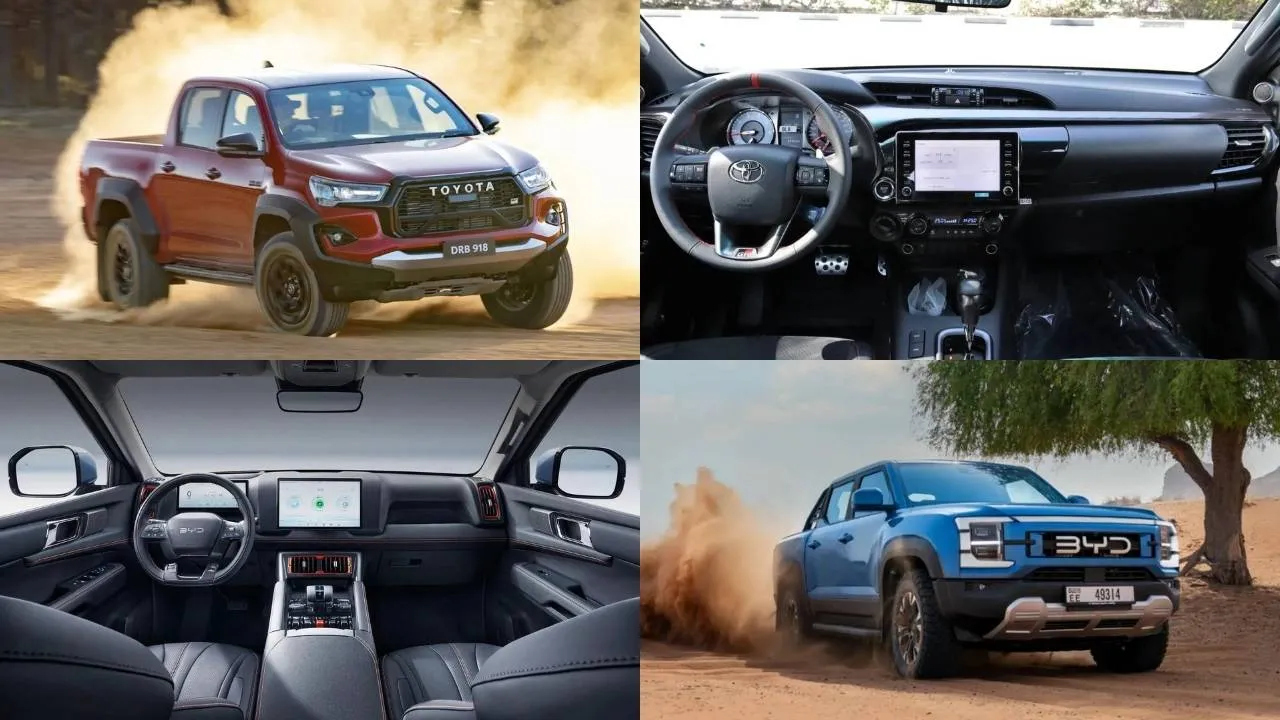Toyota Rush Vs Chevrolet Captiva: Family SUVs Compared

In the market for a mid-sized SUV that can seat seven? Look no further than the Toyota Rush and Chevrolet Captiva. Both offer functionality for families and a comfortable ride. But with distinct features and driving experiences, choosing the right one can be tricky.
Both the Rush and Captiva are a rebadged version of the Daihatsu Terio and the Baojun 530, respectively. This DubiCompare guide will break down the key areas of these two SUVs to help you decide which best suits your needs.
Toyota Rush vs Chevrolet Captiva: Dimensions
| Dimensions | Rush | Captiva |
| Length | 4,435mm | 4,699mm |
| Width | 1,695mm | 1,835mm |
| Height | 1,705mm | 1,760mm |
| Wheelbase | 2,685mm | 2,750mm |
| Fuel Tank Capacity | 45L | 60L |
| Ground Clearance | 220mm | 192mm |
| Boot Space | 190L | 155L |


The new Captiva is the biggest car out of the two. It has a longer wheelbase and is taller than the Rush, which frees up more room on the inside. However, both cars have seven seats to occupy a complete family. The Toyota Rush, on the other hand, has more ground clearance.
Toyota Rush vs Chevrolet Captiva: Exterior Design
| Features | Rush | Captiva |
| Lights | LED | LED |
| Side Step | No | No |
| Wheels | 17-inch | 18-inch |
| Puddle Lamps | No | Yes |
| Roof Rails | Yes | Yes |
| Electric Boot-lid | No | Yes |


While the Toyota Rush leans towards a boxy MPV design, the Chevrolet Captiva offers a more traditional SUV aesthetic. However, neither vehicle prioritises an aggressive look.
Both prioritise functionality as family haulers. It’s worth noting that previous generations of the Captiva boasted a bolder, more rugged SUV style compared to the current iteration.
Toyota Rush vs Chevrolet Captiva: Interiors & Features
| Features | Rush | Captiva |
| Instrument Cluster | Semi-Digital MID | 7-inch Display |
| Infotainment | Aftermarket Fitment | 10.4-inch Infotainment |
| Android Auto | Yes | Yes |
| Apple Carplay | Yes | Yes |
| Wireless Charger | No | Yes |
| Climate Control | Yes | Yes |
| Underseat Tray | No | No |
| Ambient Lighting | No | Yes |
| Audio | 8-speaker Audio | 8-speaker Audio |
| Sunroof | No | Yes |


Neither the Rush nor the Captiva offers the latest hybrid or electric features. However, the Captiva boasts a significantly more modern cabin packed with features compared to the Rush.
This is especially evident in the infotainment system, which comes standard on the Captiva but is only available as a dealer-added accessory on the Rush. In today’s tech-driven world, the Rush could be a significant drawback for families seeking a well-equipped car.
Toyota Rush vs Chevrolet Captiva: Seats & Comfort
| Features | Rush | Captiva |
| Seat Configurations | 7 Seats | 7 Seats |
| Middle Seat Folding | Manual | Manual |
| Captain Chairs | No | No |
| One-touch Tumble | Yes (Manual) | Yes (Manual) |
| Cooled Seats | No | No |
| 3rd Row Seat Folding | Manual | Manual |
| Rear Sunshade | No | No |
| Seat Material | Fabric | Artificial Leather |
| Rear AC Vents | Yes | Yes |
| Boot Space (3rd Row Folded) | 609L | 530L |
While the Captiva offers more passenger space for everyday use, the Rush boasts a larger trunk, making it more practical for packing luggage on road trips.
Toyota Rush vs Chevrolet Captiva: Engine & Performance
Both SUVs offer a single powertrain option, but the Captiva utilises a turbocharged gasoline engine for potentially more power compared to the Rush’s naturally aspirated setup.
| Engines | Rush | Captiva |
| Capacity | 1.5L NA | 1.5L Turbo |
| Max Power | 103hp | 141hp |
| Peak Torque | 136Nm | 250Nm |
| Top-Speed | 175km/h | 195km/h |
| [0 to 100km/h] | 13 seconds | 13 seconds |
| Gearbox | 4-speed AT | CVT |
| Drivetrain | FWD | FWD |
The Captiva’s turbo engine suggests more power than the Rush’s naturally aspirated engine. However, the Captiva’s heavier weight negates this advantage, resulting in similar 0-100 km/h acceleration times for both vehicles.
Toyota Rush vs Chevrolet Captiva: Safety
| Safety Features | Rush | Captiva |
| Airbags | 6 | 6 |
| ISOFIX Anchors | Yes | Yes |
| Parking Sensors | Rear | Front & Rear |
| TPMS | Yes | Yes |
| 360-degree Camera | No | Yes |
| ADAS | No | No |
Both MPVs lack ADAS features. However, since they are placed on the lower end of the pricing scale, we can let it slide and look at what is currently offered. Even in safety equipment, the Captiva outperforms the Rush by a good margin.
Toyota Rush vs Chevrolet Captiva: Price
As always, The Rush suffers from Toyota’s attitude of not updating and equipping their cars to meet current market standards. According to Toyota UAE’s official website, prices of the Toyota Rush start from AED 72,000.

Find used Rush for sale in the UAE and new Rush for sale in the UAE.
On the other hand, the Chevrolet Captiva offers better value than the Toyota Rush with a starting price of AED 84,500, according to Chevrolet UAE’s website.

Find used Captiva for sale in the UAE and new Captiva for sale in the UAE.
Subscribe to DubiCars’ WhatsApp Channel for the latest automotive news, guides, polls, and informative infographics.


